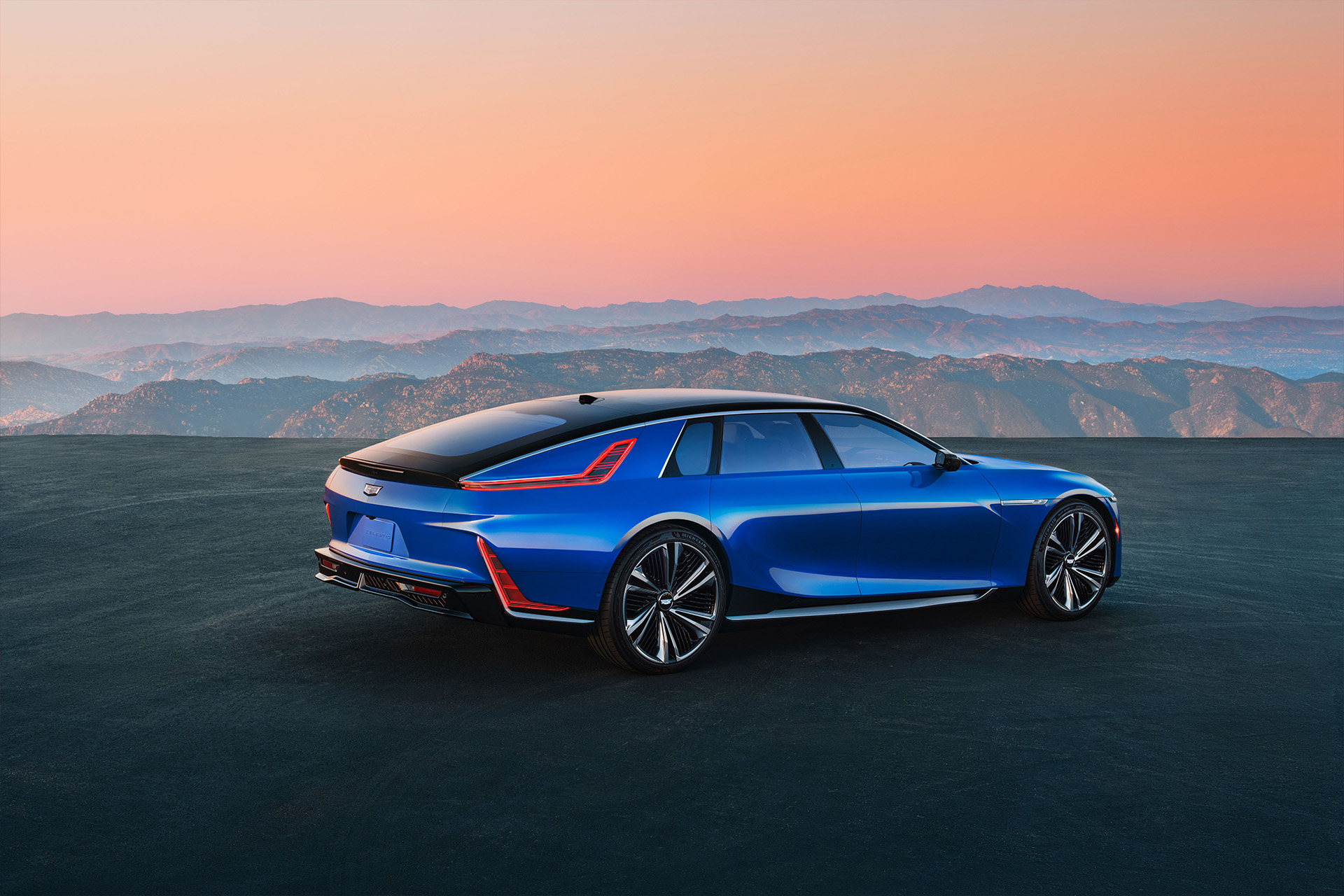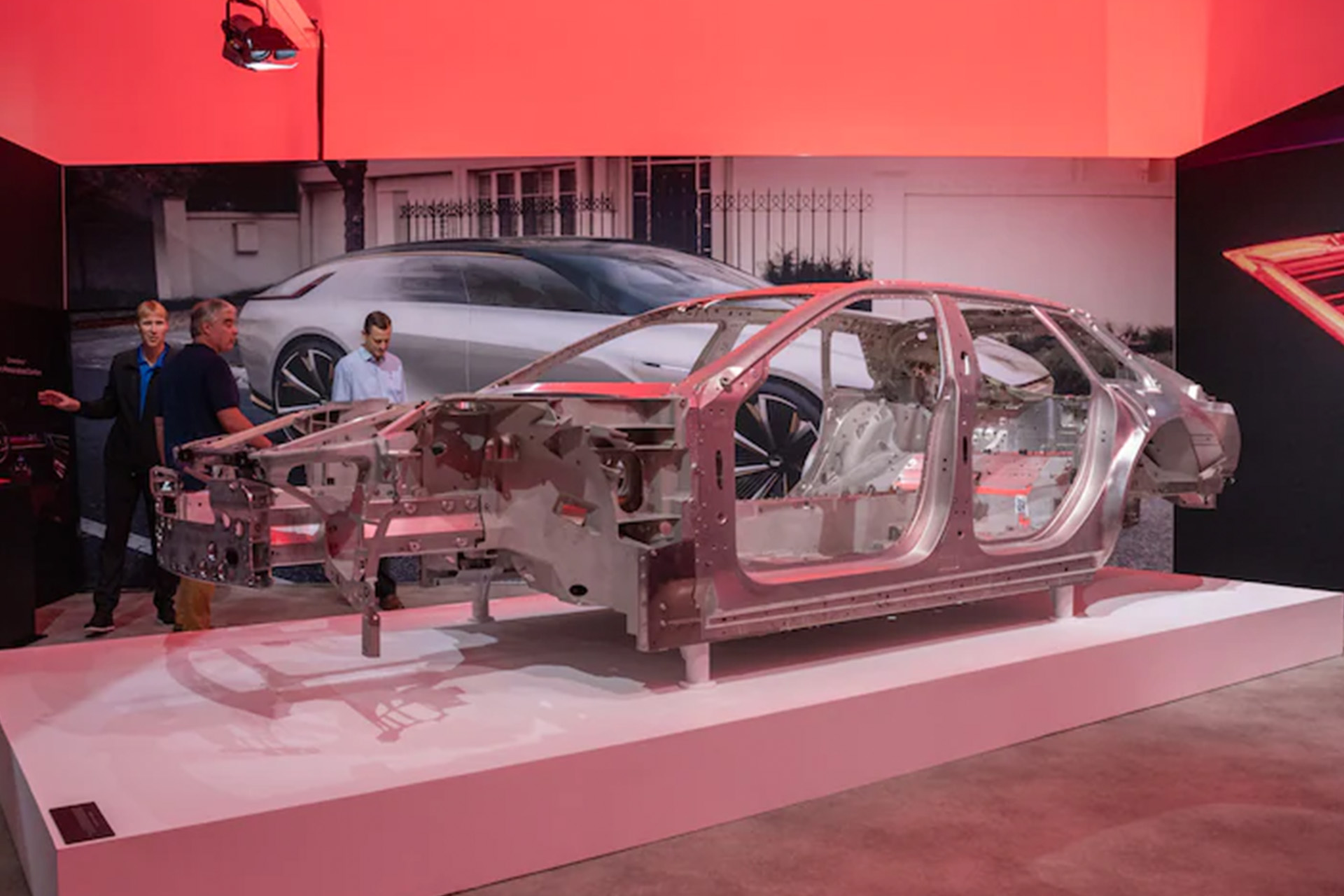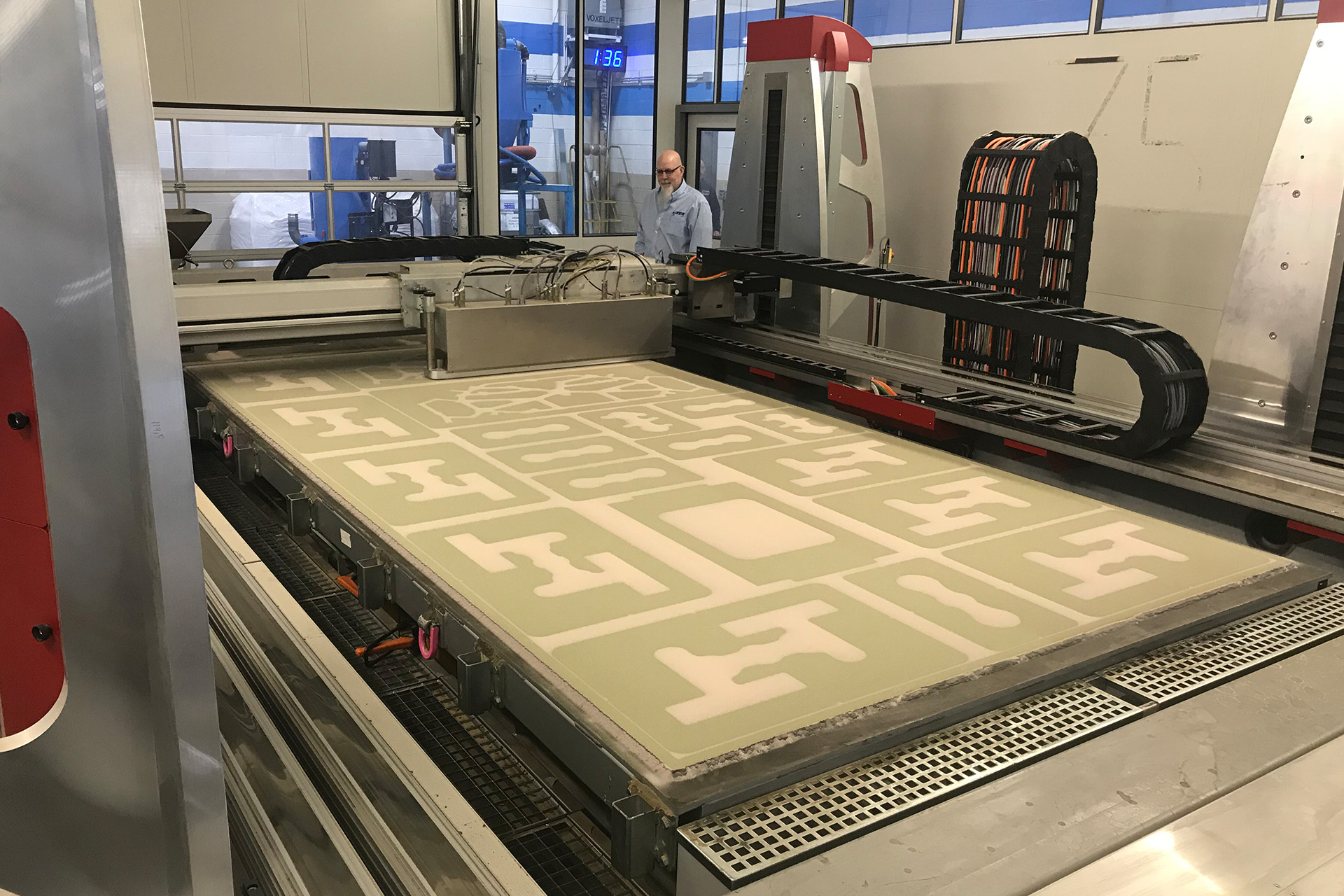Mission M
Semi-automation
3D printing for small and medium runs
Flexibility and productivity with partially automated additive series production
We speak of partial automation when certain work steps within a value chain are performed manually, i.e. with the help of employees. However, 3D printing can also be used in serial production in this form – but rather when quantities are rather low and the focus is on the benefits and optimization of components.
This is how the US foundry Tooling Equiptment International (TEI) near Detroit operates. Equipped with three VX4000 3D printers, the company has one of the highest 3D printable volumes for sand in North America. TEI uses this volume to cast, among other things, a unique underbody structure for the CELESTIQZE electric luxury sedan for the General Motors brand Cadillac.
Less investment
Through the use of 3D printers, sand core production is fully automated. Manual work is limited to a minimum for cleaning the cores. Core tools and fully automated cleaning systems do not have to be purchased.
Geometric freedom
New, optimized and highly complex designs can easily be manufactured additively. Undercuts are negligible, which helps to produce highly complex and consolidated products.
Component insulation
The ability to bring together complex assemblies and components and print them in one piece can save storage and assembly costs, reduce weights and improve functionalities.
By cooperating with voxeljet, we can significantly reduce the delivery time of molds and cores for our customers. In addition, we achieve new highs in terms of the size and weight of the parts we can cast.
Oliver Johnson, CEOTooling & Equipment International
More functional, more flexible, cheaper - why semi-automated 3D printing can be worthwhile
When it comes to assembling many individual parts in one casting and saving weight in the process, additive manufacturing is the method of choice. This is also the case with the Cadillac Prestige project CELESTIQUE. Cadillac’s new, highly customizable luxury car is the perfect example of how 3D printing of cores can be used to gain new degrees of freedom in design and production.
To do this, TEI relies on a combination of conventional and additive manufacturing. For example, tools are built for the underbody design, but to map the flow of the melt and the complex internal cavities, box profiles and geometries, TEI prints sand cores on its VX4000 3D printers and inserts them into the conventionally manufactured tools. What’s special about the underbody: While this consists of 40-50 individual components in other cars, TEI worked with GM engineers to consolidate the design into 9 individual parts. Fewer rivets and welds are the beneficial result.
While the 3D printer performs the printing entirely automatically, the cores must be manually removed from the sand bed and cleaned afterwards. The combination of tooling and core printing gives TEI a decisive competitive advantage and Cadillac a uniquely homogeneous underbody.
VX4000: The world's largest 3D printer for sand
The VX4000: the largest 3D printing system for sand molds in the world. With a contiguous build envelope of 4 x 2 x 1 meters, it is second to none in terms of build volume. Even for high-volume production jobs, the VX4000 ensures consistent build times and impressive precision and part quality.
3D printing solutions
Would you like to learn more about us and 3D printing? Click here for the entire voxeljet solution portfolio.





















